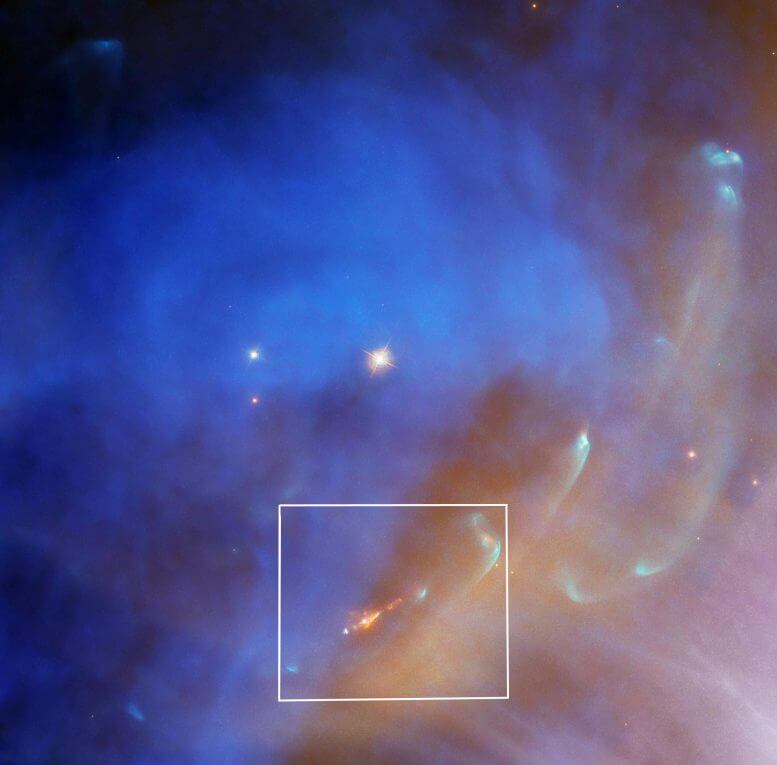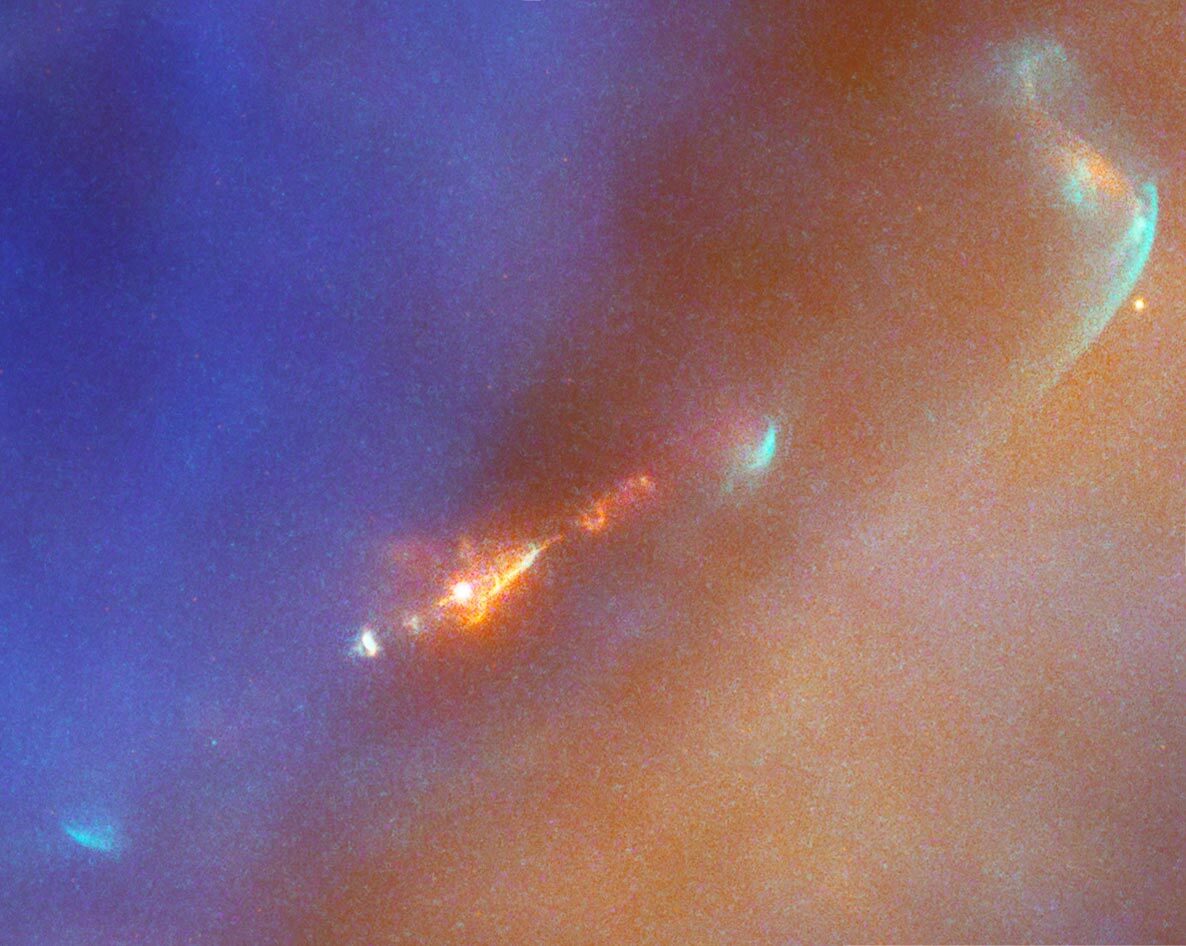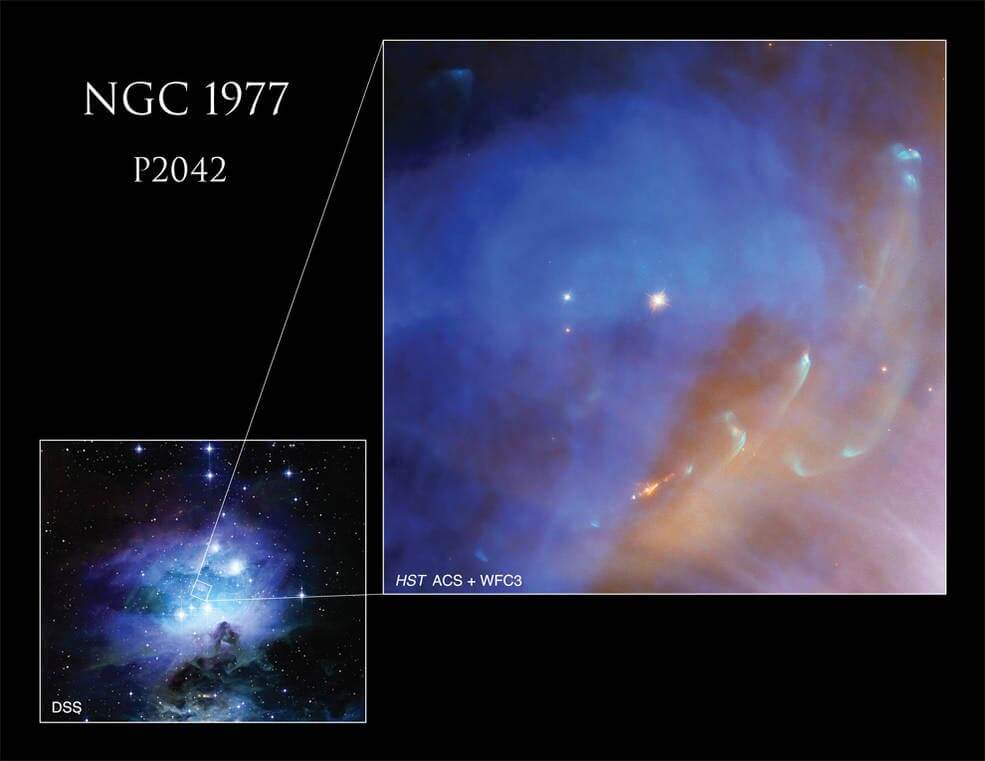Generally, the flow of such a jet coming out of a young star will only be seen when it collides with material around it, and creates bright shock waves that disappear when they cool, so they are difficult to observe

A jet from a newly formed star flares into the luminous depths of the return nebula NGC 1977 in this Hubble image. The jet (the orange object in the bottom center of the image) is emitted by the young star Frango 2042, which is embedded in a debris disk that can form planets. The star drives a pulsating jet of plasma that spans two light-years in space, and tilts north in this image. The jet's gas is ionized until it glows by the radiation of a nearby star, 42 Orionis. It is particularly useful to researchers because its flow continues to be visible under the ionizing radiation of nearby stars. Normally the flow of such a jet will only be seen when it collides with material around it, creating bright shock waves that disappear as they cool.

Detailed view from the previous photo: a closer look at the jet.
Credit: NASA, ESA, and J. Bally (University of Colorado at Boulder)
Processing: Gladys Kober (NASA/Catholic University of America)
In this image, the colors red and orange indicate the jet and the glowing gas of bound shock waves. The glowing blue ripples seen flowing out of the jet on the right of the image are arcuate shock waves directed at the star 42 Orionis (not visible in the image). Arc shock waves occur in space when streams of gas collide, and the origin of the name is the crescent-shaped waves that a ship creates when it moves through water.
The luminous western lobe of the jet is wrapped in a series of orange arcs that decrease in size as the distance from the star increases, forming a cone or kish shape. These arcs may mark the ionized outer rim of a debris disk around the star with a radius 500 times the distance from the Sun to Earth and a large hole (170 AU) in the center of the disk. The saucer-like shape may mark the surface of an outflow of material that is moving away from the disk and is estimated to be losing about a hundred million Suns of mass each year.

NGC 1977 is part of a trio of return nebulae that make up the Running Man Nebula in the Orion system.
More of the topic in Hayadan:
- A massive explosion in space solved a thousand-year-old mystery
- Vortices of chaos at the heart of the Orion Nebula
- Some of the missing matter of the universe has been found thanks to the Very Large Telescope
- Not a light year, a jet year (and website editor's disclaimer)
- The moon is expected to be especially large during the eclipse on the night of Sukkot (Monday morning)
